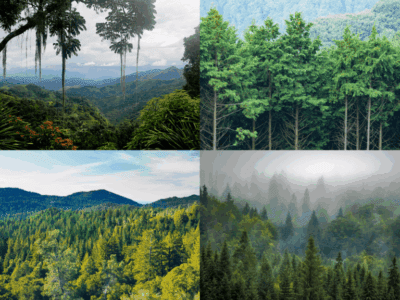My Kind of Town
Climate change is coming to Chicago and Lake Michigan.
“My kind of town, Chicago is my kind of town.” Or so Frank Sinatra sang. I’m not sure he really felt that way himself, but the song rings a chord with me. I didn’t grow up in Chicago but we visited frequently to see my parents’ families. Chicago is also, as it turns out, ground zero for climate change. The Chicago lakefront has been a site of contestation, development, and preservation since its early days. Climate change is making old solutions obsolete.
Chicago is built on swampland, leaving it perilously close to the level of the Lake. In earlier days, the City’s dealt with the problem by jacking buildings up 8 feet and then raising the street level to fit. Chicago has long fascinated environmental historians. In their 2021 book, Lakefront: Public Trust and Private Rights in Chicago, Joseph Kearney and Tom Merrill plumb the social and legal history of the lakeshore.
Among environmental lawyers, Chicago is famous for the case that established the public trust doctrine. The upshot was to allow the state legislature to rescind a grant of part of the harbor to the Illinois Central Railroad. Kearney and Merrill show that the story is a bit more complex than the conventional tale of private greed versus the public interest.
Chicago has been confronting an unusual problem that may be linked with climate change. Lake Michigan has been rising and dropping at historic rates. (At the beginning of this month, for instance, the lake level was three feet above the historical average for the month.) If this trend holds, the oscillating lake level raises new question about how to manage Chicago’s relationship with the lake. That relationship has been crucial to Chicago since the early days when it survived by connecting shipping on the Great Lakes with a nearby outlet to the Mississippi.
A 2007 study used in Chicago’s climate action plan predicted that the Lake’s average level will remain about the same under a low emissions standards and drop slightly with higher emissions. It said that “natural fluctuations” would continue, but didn’t apparently consider whether the size or speed of those fluctuations would be impacted. It’s not clear whether we’ve seen anything beyond past fluctuations, based on a chart of historical water levels. Judging from a 2019 report, the drivers of lake level variability are still not well understood. In 2020, the lake level hit a record high, after having hit a record low in 2013. Models now generally forecast a small average drop in lake levels by the end of the century, although not all the models agree. What makes prediction difficult is that runoff into the Great Lakes and evaporation are both increasing.
What happens to lake levels depends on which trend predominates. What happens to variability depends on whether annual changes in precipitation and evaporation are or out of sync. If low precipitation and high temperature go hand-in-hand, we’ll see sharp dips in lake levels, with sharp increases if wet summers are also cloudy and cooler. That seems like a plausible scenario under climate change but seemingly hasn’t been established yet.
As climate scientists predict, more rain is hitting Chicago in the form of intense storms. As the NY Times reports, “Chicago’s historic average for precipitation for May, 4.49 inches, was spectacularly eclipsed in May 2018 when a record 8.21 inches of rain fell. That record lasted just one year: In May 2019, 8.25 inches soaked the city. Then in May 2020, another record, 9.51 inches, swamped Chicago.”
Climate change is impacting Lake Michigan in other ways. The online journal Grist reports that “average maximum ice cover on the lakes has fallen 22 percent over the last 50 years” and “also staying frozen for less time each year, and the ice that does form is more unstable thanks to shifting climate patterns and water temperatures.” Moreover, “average temperatures in the Great Lakes region rose 2.3 degrees Fahrenheit between 1951 and 2017.” Climate change is hitting home right in the middle of the country.
We tend to think of the current configuration of the lakefront or the seashore as natural, imagining that human development tracked the existing line between water and land. That line, however, is the outcome of a negotiation between humans and nature. Much of the change historically has been driven by human engineering and urban development. Now, though, climate is changing rivers, lakes and oceans, forcing a renegotiation of our relationships to those bodies of water. What we see as a natural part of an eternal landscape is neither wholly natural nor eternal.
Reader Comments
3 Replies to “My Kind of Town”
Comments are closed.







US air quality report finds a sharp uptick in pollution, with the hardest-hit cities in California
https://www.cnn.com/2022/04/21/health/air-pollution-report/index.html
It’s going to be hot with a chance of blackouts
https://www.cnn.com/2022/05/21/politics/blackout-summer-heat-energy-grid-what-matters/index.html
WE ARE PAST THE TIME IS UP POINT, AND HAVE FAILED TO ACHIEVE THE IMPOSSIBLE DREAMS, WITH NO IMPLEMENTABLE SOLUTIONS TO SAVE THE HUMAN RACE AFTER EVERY EARTH DAY SINCE 1970 WHEN POGO SAID:
“WE HAVE MET THE ENEMY AND HE IS US.”
COVID’s Death Milestone And Mass Shootings: Is Mass Death The New Normal?
https://www.huffpost.com/entry/buffalo-supermarket-shooting-accepting-death_n_62892b4ae4b01a50ab591a04
As if Climate Change wasn’t enough to destroy us, we must also suffer out of control OOVID and a Culture of Hate nurtured by our Washington politicians that distracts us from Climate Change.
Can UC or any institution do anything to protect our civilization now that it is too late, or are Will and Ariel Durant be right again about political and intellectual leaders being the paramount cause of the destruction of civilizations and we have failed to heed the Lessons of History one last time?
As usual, I don’t expect an answer any more because there is no satisfactory answer any more.